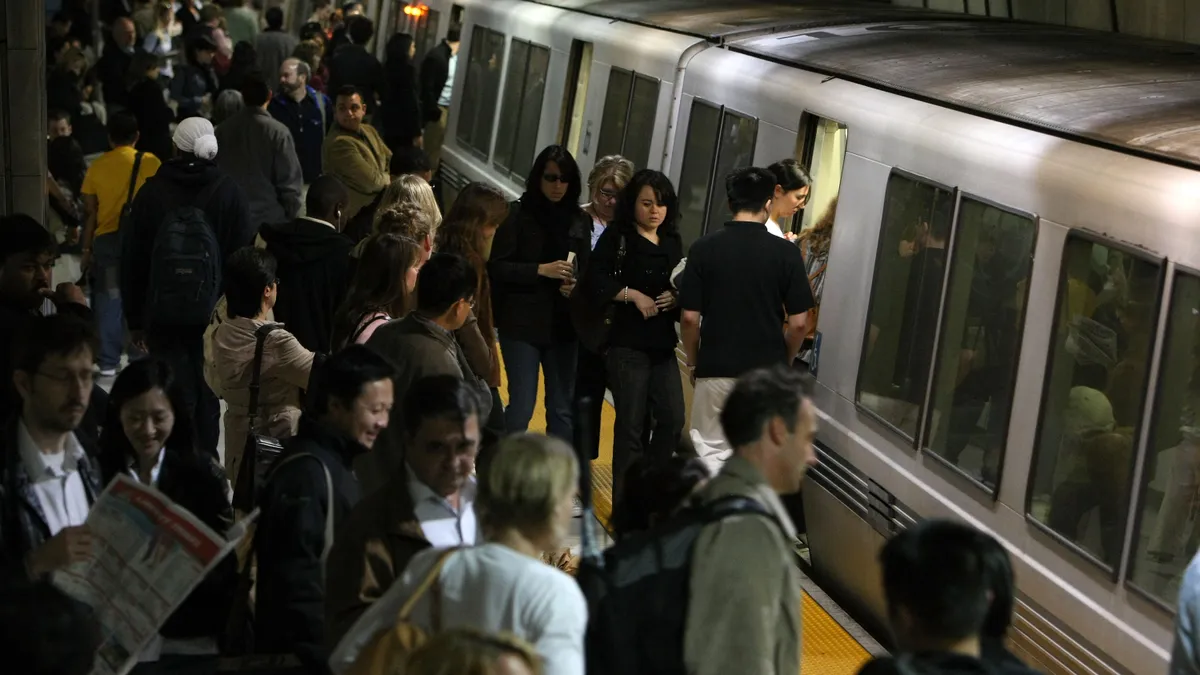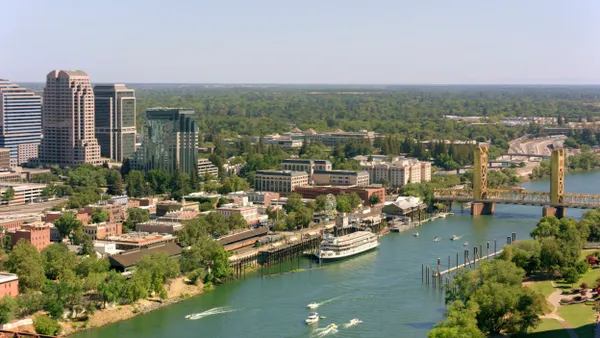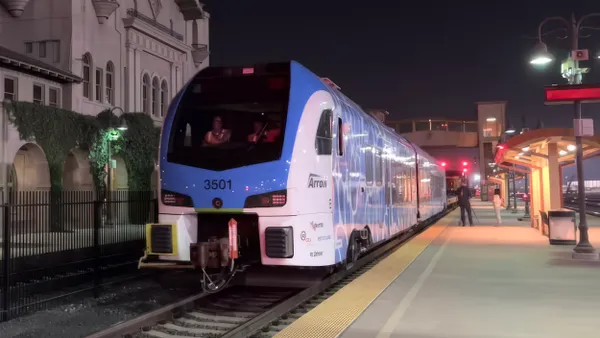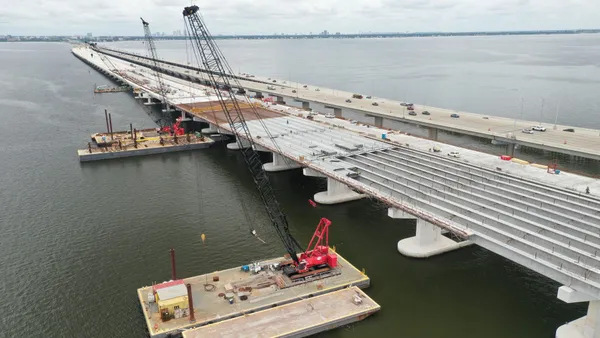Dive Brief:
- Nearly 200 urban areas across all 50 states, the District of Columbia and five U.S. territories will get a share of $20 billion in transit funding, the U.S. Department of Transportation announced Wednesday. The funding comes from the bipartisan infrastructure law passed last year but was dependent on the Congressional passage of a fiscal year 2022 appropriations bill, which was approved in March.
- The Federal Transit Administration (FTA) released apportionment tables for each of the 30 programs for the 2022 fiscal year that it says will provide 58% more funding to these programs.
- But transit projects will face "increased scrutiny over their costs and timelines to build," according to a new report from the Eno Center for Transportation.
Dive Insight:
With full fiscal year 2022 funding now available, the FTA released details on the funding available to states and urbanized areas for transit projects under a variety of competitive and formula grant programs. "This funding will open more doors to Americans than ever before," said FTA Administrator Nuria Fernandez in a press release.
As detailed by DOT in Wednesday's release, the funding levels increased for many programs, including:
- Urbanized Area Formula Program, which supports transit agencies in large U.S. cities and suburbs, increased 29% more than the fiscal year 2021 funding level to $6.9 billion;
- State of Good Repair Formula Program, up 52% to $4.1 billion;
- Rural Area Formula grants, which support transit programs in rural areas, a 23% increase to $893 million;
- Enhanced Mobility of Seniors and Individuals with Disabilities program, up 44% to $422 million;
- Funding for transit programs run by tribal governments increased by 25% to $45 million;
- State Safety Oversight Progam, up 69% to $49 million.
New York, California, Illinois, New Jersey and Texas are the top five states in terms of funding designated for programs that support metropolitan and state planning, state of good repair, bus and bus facilities, and state safety oversight efforts, among other programs.
Even with this large amount of federal funds, current practices could eat up too much time and money. The Eno Center for Transportation report found that transit construction projects in the United States cost nearly 50% more per mile than similar projects in Western Europe and Canada. U.S. projects also take much longer to build: six months longer for mostly above-ground projects and as much as a year and a half longer for underground projects.
The report recommends better governance by public institutions leading transit projects. It also suggests public and private entities that build them should improve their processes and take advantage of standardized designs and off-the-shelf transit vehicles.











